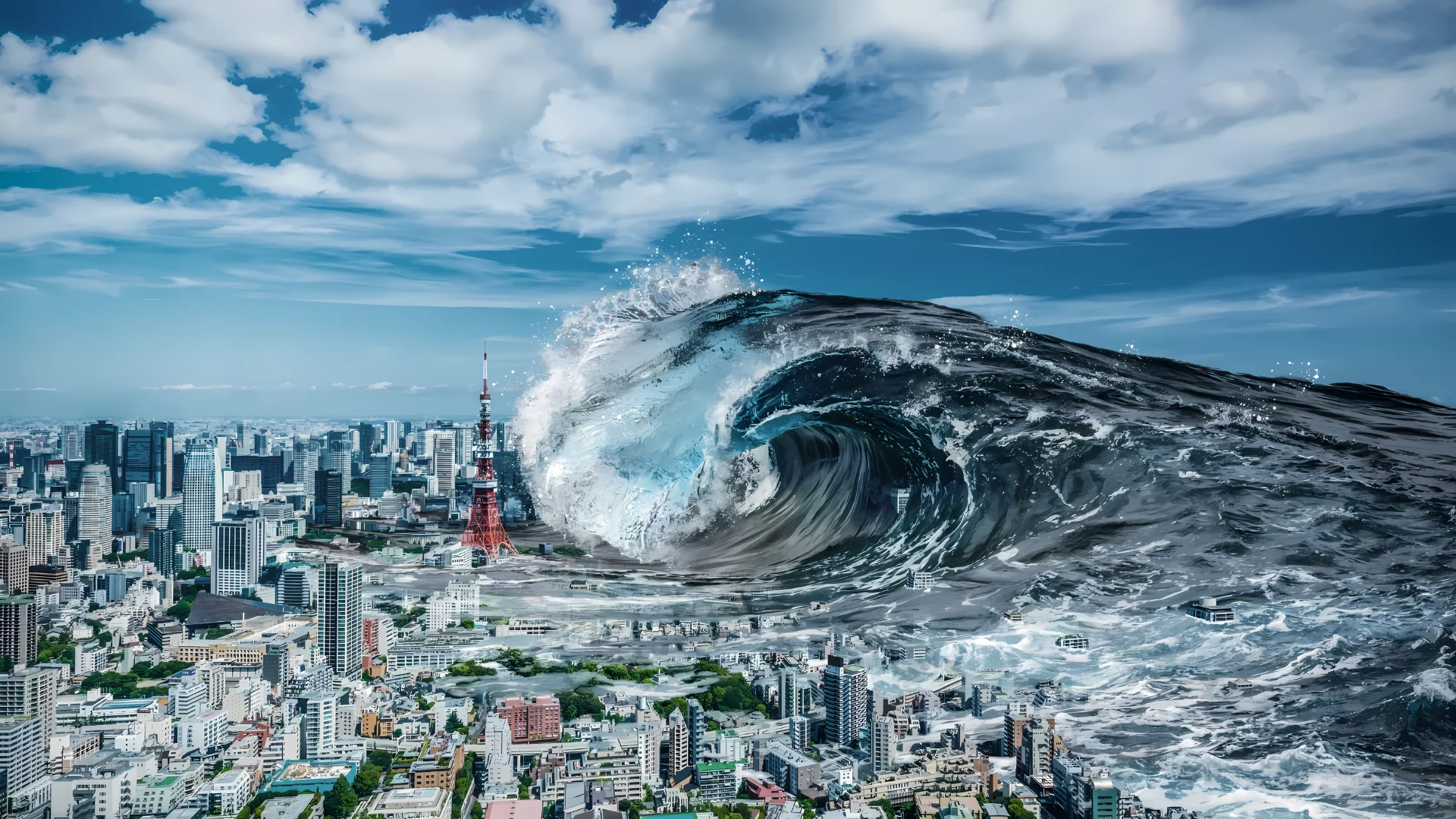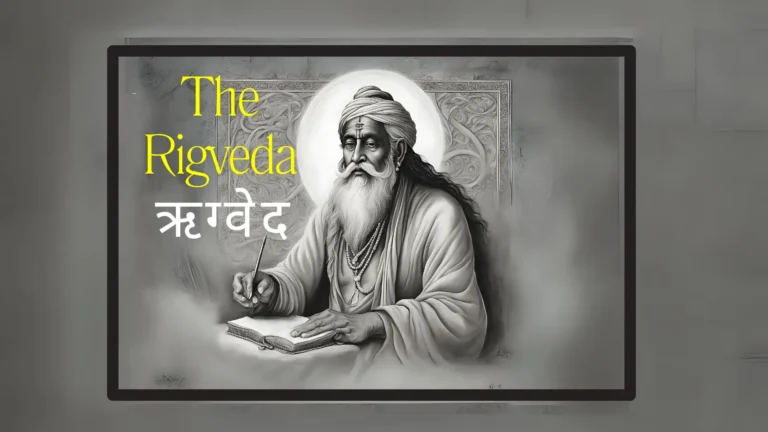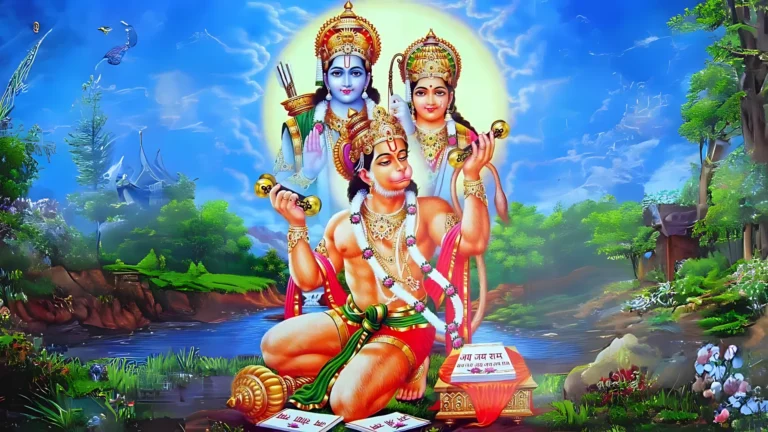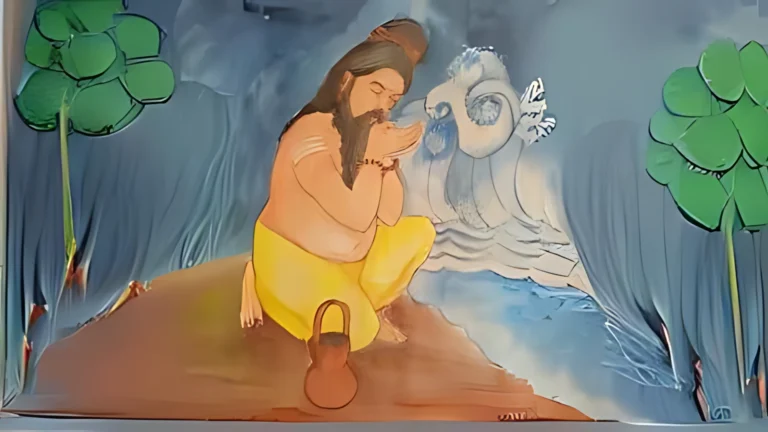Please Like the Blog and Share it for Maximum Reach
Table of Contents
Hari Vamsa and the Topic on Pralay
We, in Sanatana Dharma, celebrate the Hari Vamsa Purana as the 19th Purana or book of reference. A lot alike to the 18 Puranas, the Hari Vamsa Purana too has Upaparvas which are 3 in number. The Hari Vamsa details the process of Pralay which is described in the later part of this Video Post
What are Upaparvas?
Upaparvas are subfamilies of a scripture where the latter breaks down into logical chapters as they satisfy the requirements to be standalone subjects. They focus on a particular subject and explain it.
In simple terms, they are chapters of a particular subject. They help readers grasp the essential concepts easily through the titling which otherwise might seem huge and random concepts. Like for example, the Mahabharata has 18 Parvas (18 books or cantos).
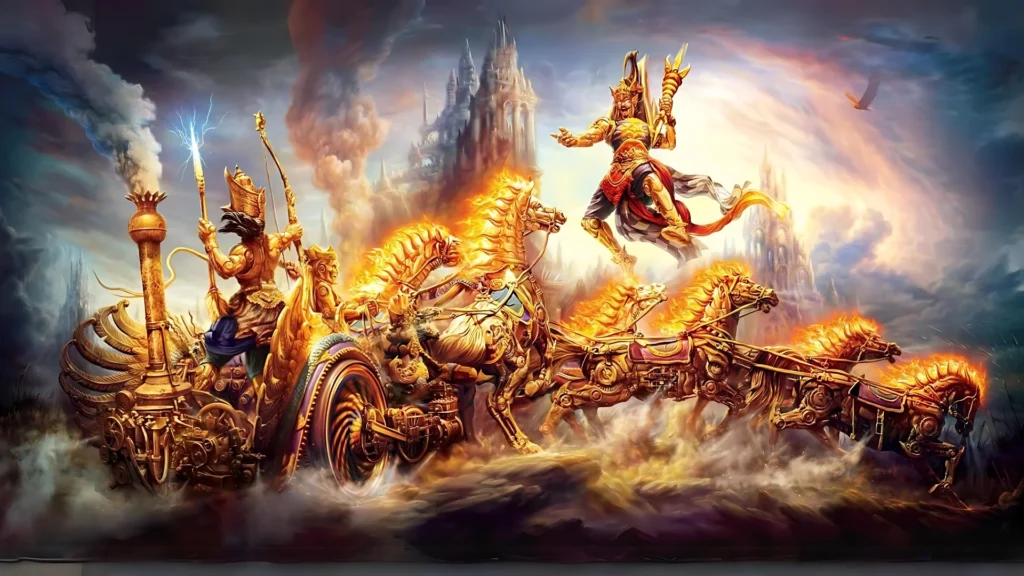
Now, the first among the 18 is Adi Parva (a canto) which is further divided into 19 Upaparvas or 19 chapters or divisions.
3 Parvas of Hari Vamsa Purana
Similarly, in Hari Vamsa, there are 3 primary objects of study or Parvas.
They three Parvas are namely:
1) Hari Vamsa Parva
2) Vishnu Parva and
3) Bhavishya Parva
Before we will briefly mention the contents of the 1st Parva of Hari Vamsa Purana, let us look at the benefits of reading this holy scripture.
Benefits of Reading Hari Vamsa Purana.
Hari Vamsa Purana is none other than Sri Vyasa Dev’s primary works. He is the 17th incarnation of Lord Maha Vishnu. Both Men and Women are equally eligible to read and digest it, unlike the Vedas.
So, it is an opportunity to increase your knowledge about devatas, and know about the various Planets, Gods, Rituals, Science behind phenomena and creation and Stories of Lord Krishna.
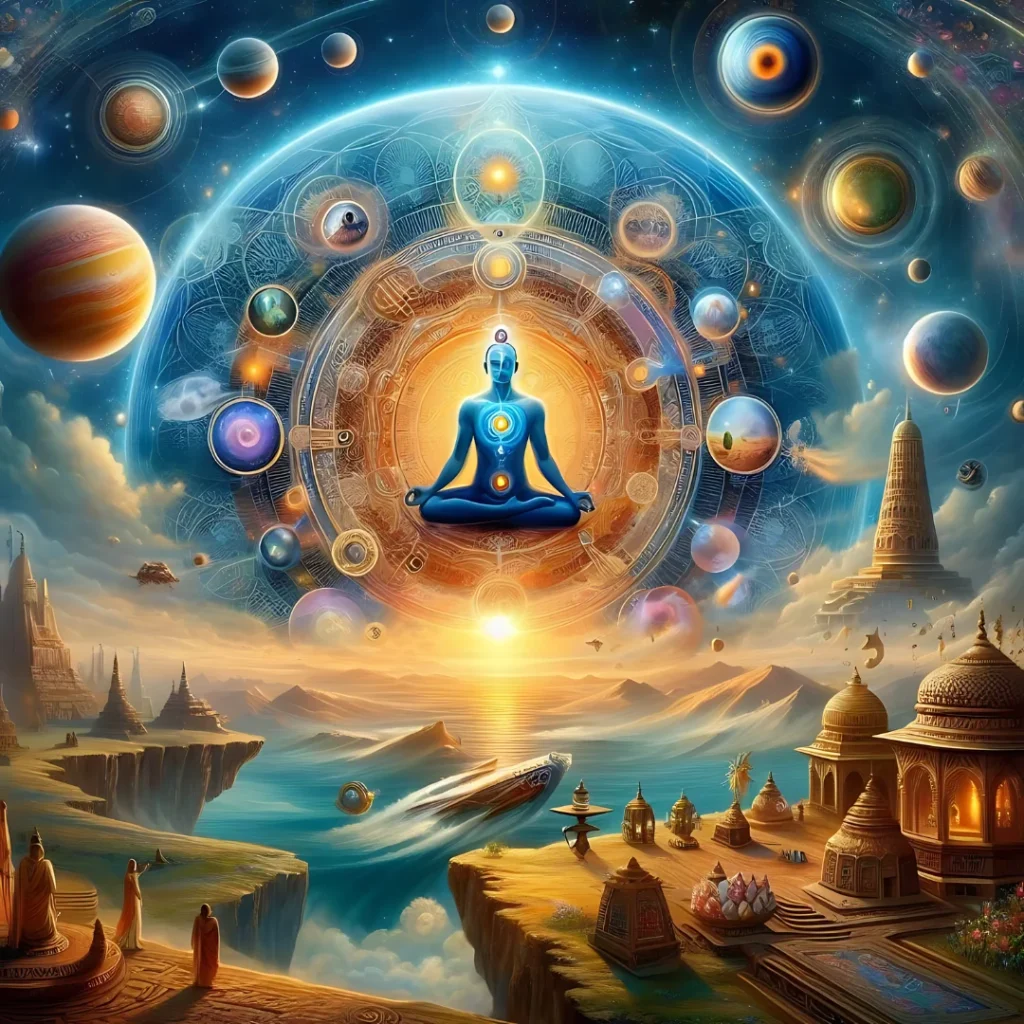
This scripture is a complete guide for both a balanced, happy material life and for spiritual growth. Hari Vamsa Purana has a great detail of the pastimes of Lord Krishna and lessons from which we can benefit.
Forefathers of Prithu Maharaja
The First Canto begins with the procreation started by Sri Brahma to populate the universe. It first focuses on the family of Svayambhuva Manu. The very first creation of Sri Brahma is Svaayambhuva Manu followed by the Saptarishis and Rudras.
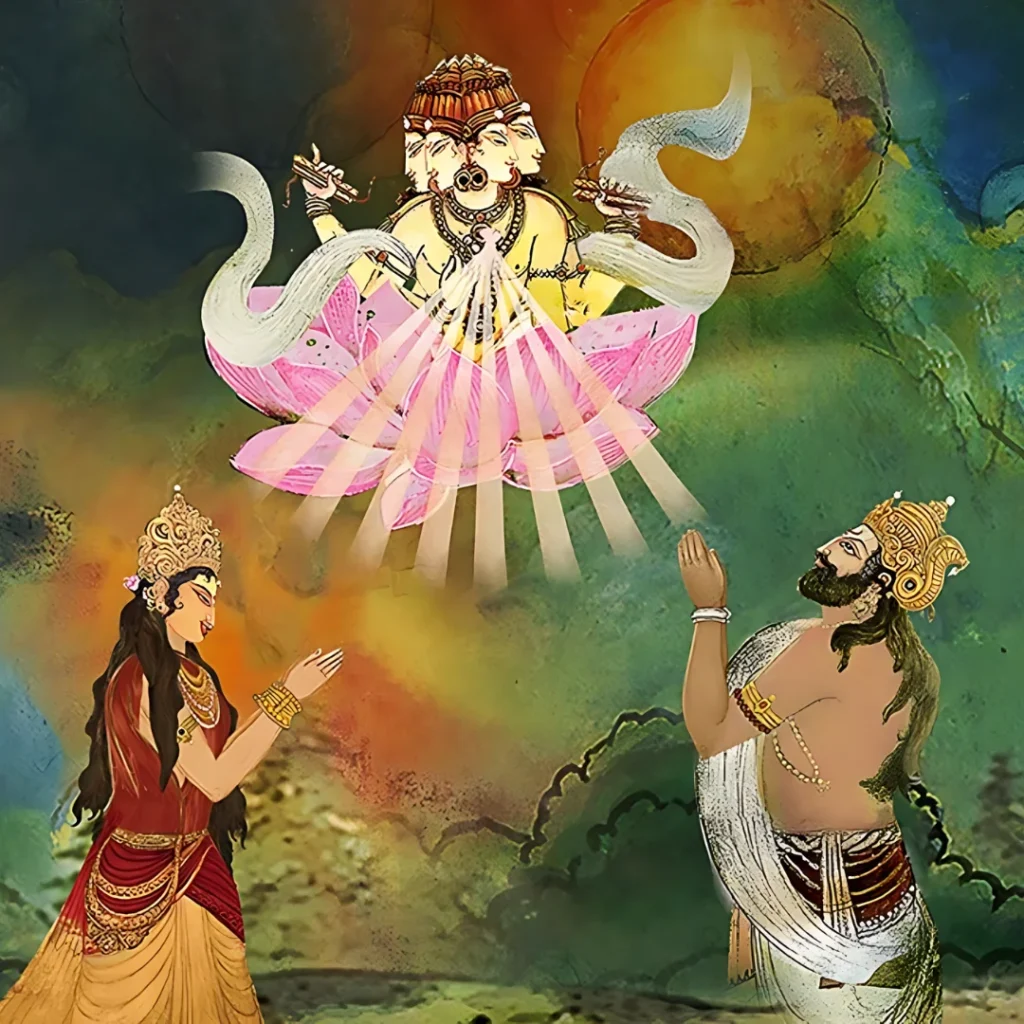
The 4th creation was that of Sanat Kumaras or the four Kumara brothers, blessed with eternal innocence and childhood. After Svayumbhuva Manu wedded Shatarupa, they parented 2 noble sons by the name Priyavrata and Uttanapada. Dhruva, the devotee who undertook severe hardships at a tender age to attain Sri Narayana’s Darshan was born to Uttanapada.
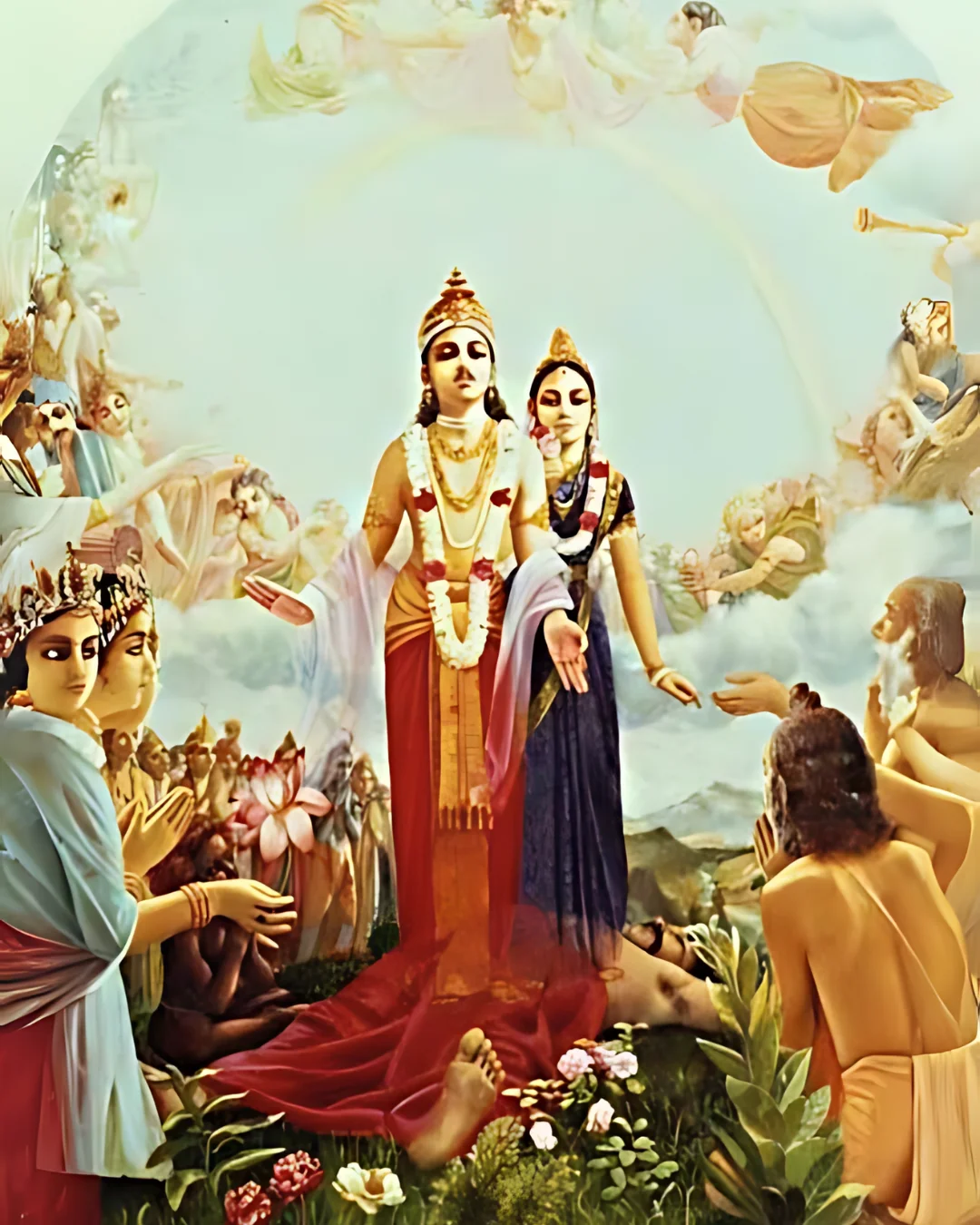
Dhruva was the grandson of Svaayambhuva Manu. Many generations after Dhruva, King Anga was born and his son was King Vena. The incarnation of the Lord, Prithu Maharaja was born in Dhruva’s clan as the son of King Vena.
7/8 Questions from Sanatana Dharma
The scores generated in this Quiz may or may not be absolute. There may be right or wrong answers to each Question. A percentage towards 100 indicates that you are more aligned to the overall subject matter.
Family of Kashyapa
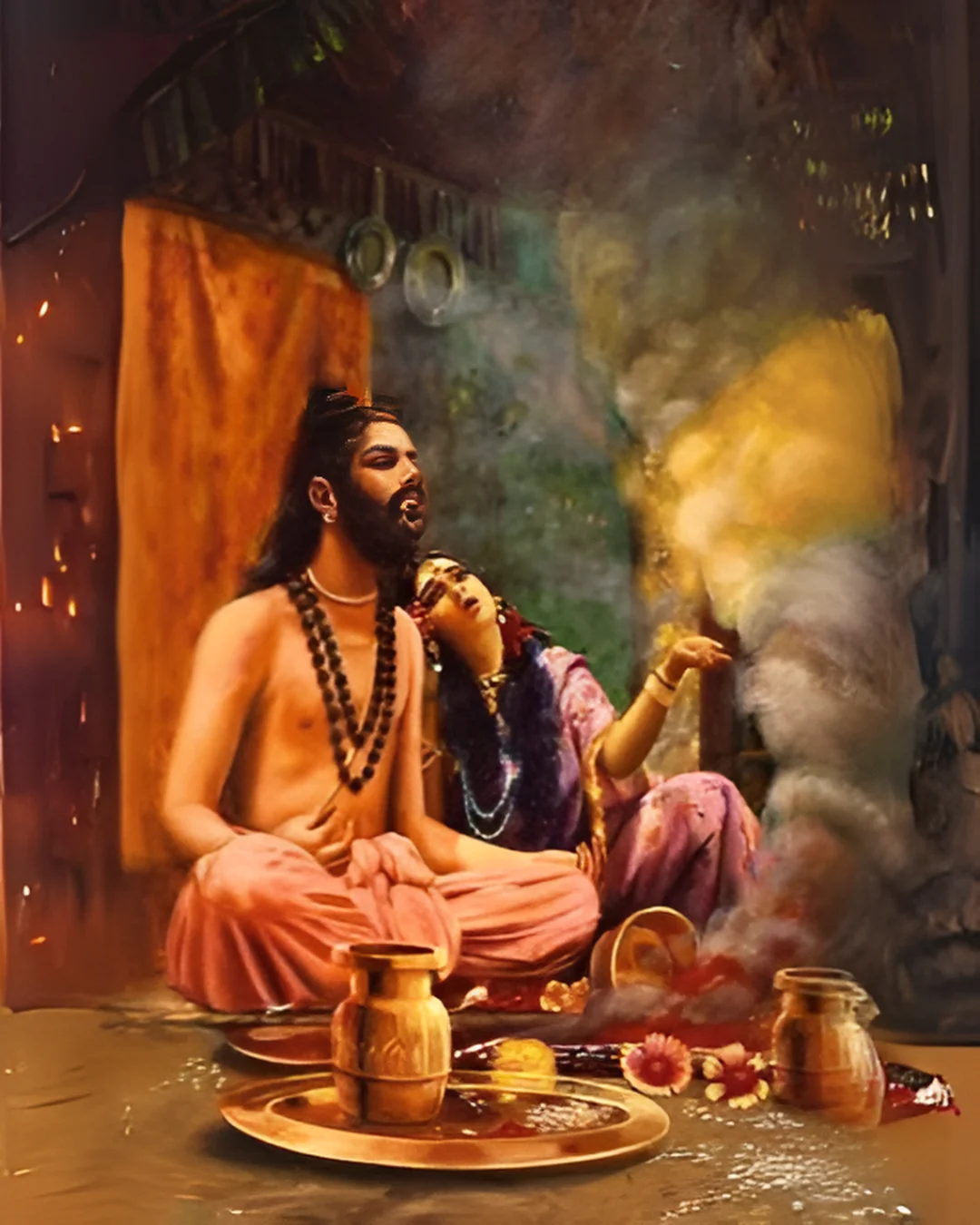
The next chunk of the Canto focuses on Daksha Prajapati and his family. It describes the birth of Daksha and his 60 daughters. The marriages of Daksha’s daughters find elaboration. Briefly, 13 daughters of Daksha wedded the great ascetic Kashyapa Prajapati, 10 daughters married Dharma Devata or Yama while 27 of the remaining daughters married Soma or Chandra Devata. These 27 queens of Chandradev are known as the 27 Nakshatras. Each Nakshatra is associated with unique characteristics and forms an important aspect in Astrology.
A Glimpse of Kashyapa’s Family Tree
Aditi the foremost wives of Kashyapa gave rise to Devatas, also called Adityas for they are the son of Aditi. Diti gave birth to demons, traditionally called Asuras or Danavas. Venata bore Garuda and Aruna while Kadru was the mother of Nagas (multi-headed serpents) including the Ananta Shesha who serves as the resting bed of Sri Vishnu.
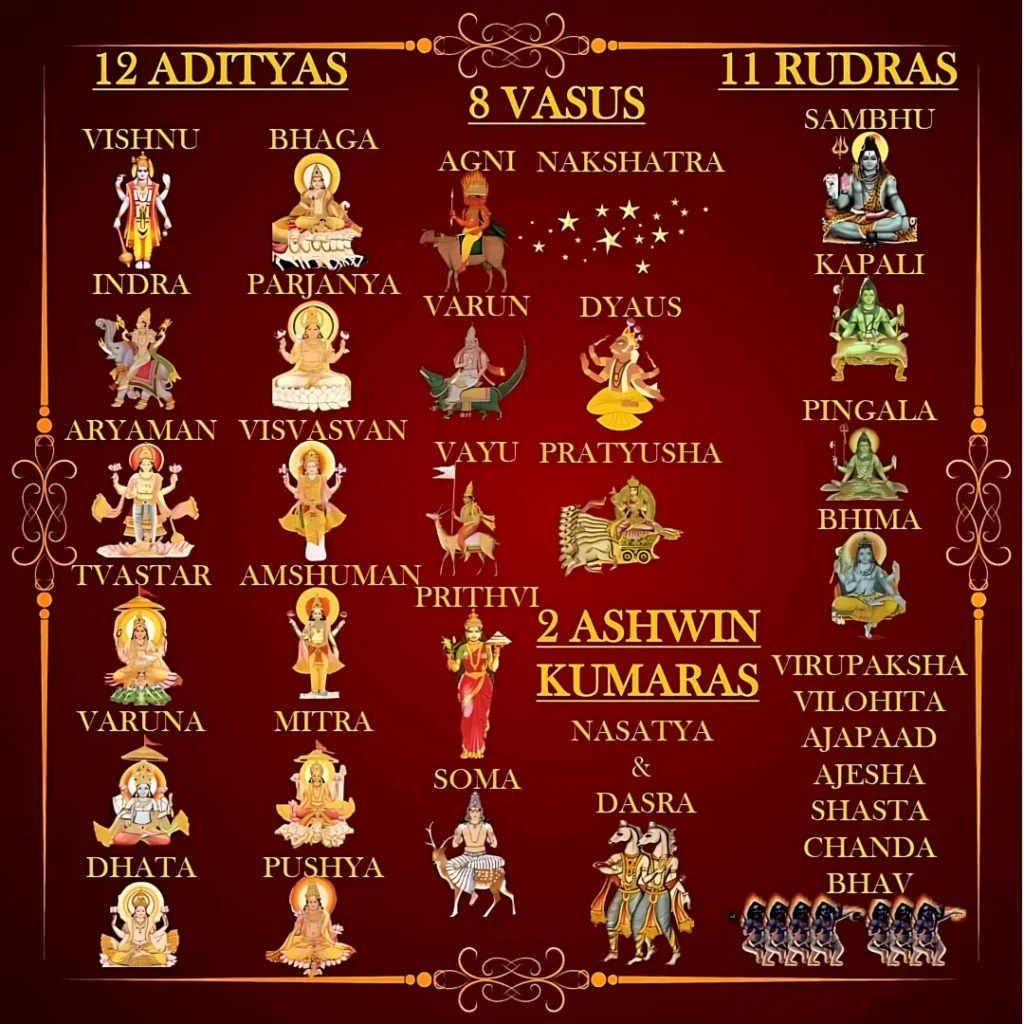
There are 33 grades of devatas which break down as 12 Adityas, 11 Rudras, 8 Vasus, and 2 Ashwini Kumaras. Chapter 1 explains the concept of time. On the basis of time, the 7th Chapter describes the reign of Manu. Concept of time covers Chatur-Yugas, time of creation, time differences across the worlds and ultimately ends on describing Pralay or destruction.
What is Manavantara?
Manavantara denotes the lifespan of a Manu. It is the age of Manu or 100 years according to their motion of time. It does not relate to the 100 years on Earth. So, a Manavantara is a Vedic unit of time comprising 71 Chatur Yugas. Therefore,it means that 71 Chatur Yugas are 100 years of Manu’s lifetime.
Life of Brahma and existence of the 7 higher worlds. Brahma lives for 100 years, corresponding to the motion of time in Satya Loka which differs from 100 years of Earth. He performs his duties in the morning and retires to bed in the evening.
When Brahma falls asleep, energy forces withdraw from three Lokas namely Bhu, Bhuvah, and Suvah Lokas causing its dissolution.
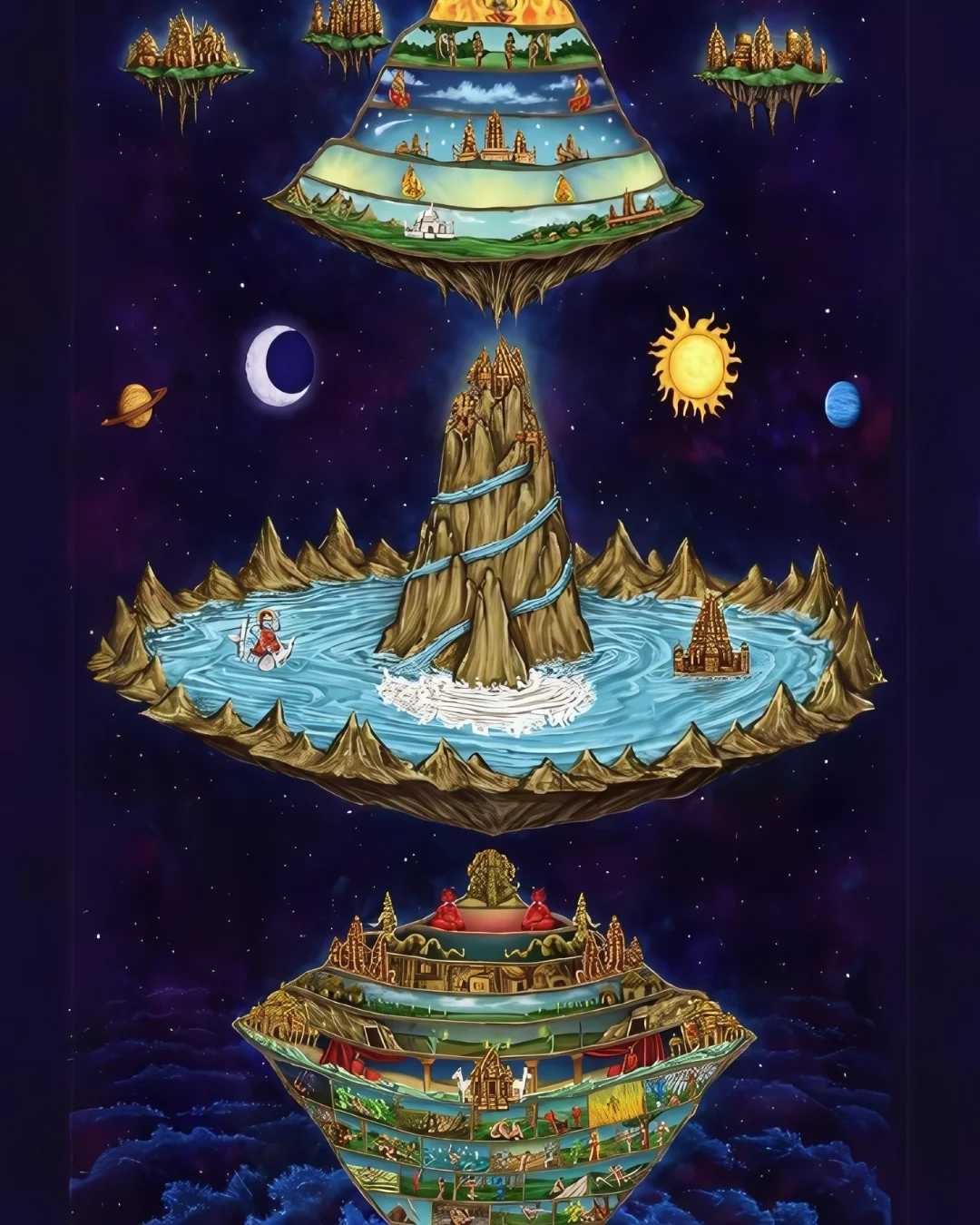
These three Lokas, at this phase, submerge underwater. This Pralay or dissolution is Avantara Pralay or Naimittika Pralay. The inhabitants of Mahar Loka (which ranks the 4th position in the strata of the 7 higher worlds), vacate the Realm and transcend to the 5th Loka named Jana Loka. In simple terms, when Brahma falls asleep, Mahar Loka remains intact but remains empty. Jana Loka occupies the inhabitants of Mahar Loka.
What are the 4 types of Pralay?
The Meaning of Pralay, in simple terms is dissolution. However, there is more to it.
Now there are 4 types of Pralay (or dissolution) namely:
1) Nitya pralay:
This is the end of a lifetime of a jiva. Birth and Death are its determining units. In Nitya Pralay, the body perishes, and the soul has to occupy a new body. This Pralay applies only for the body of the person and not the soul. Transmigrating, that is when the soul travels from one body to another is called Laya.
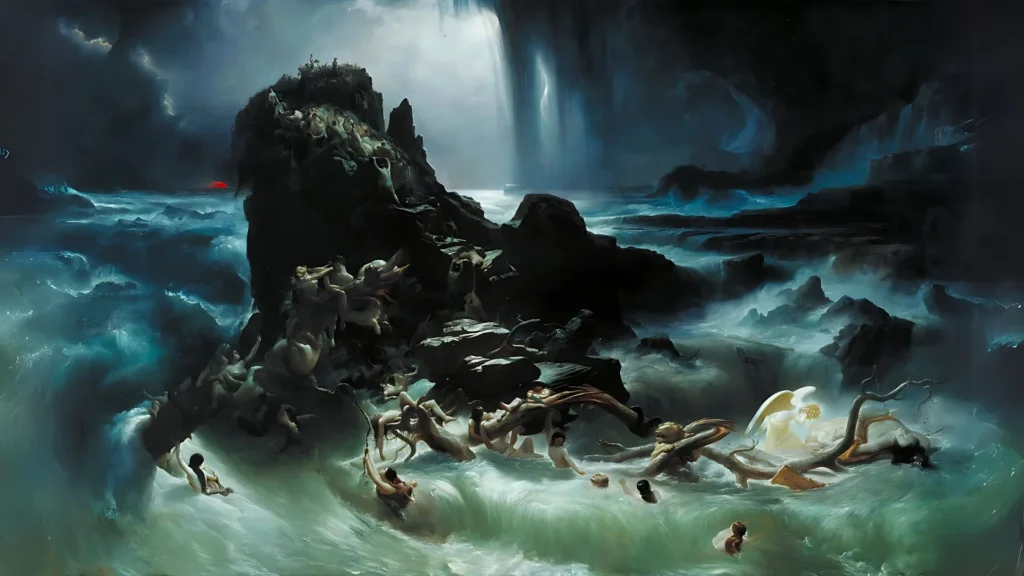
Nitya Pralay is bound to occur if one has a body or is born on the earthly, material plane. He gets a body according to his Karmas.
2) Naimittika Pralay:
The Pralay (submergence of Bhu, Bhuvaha and Suvaha Lokas) is born out of some reason (Brahma falling asleep). It causes partial destruction as the submerged Lokas revive with the rise of Brahma from bed. It is a temporary dissolution that occurred because of a secondary reason.
3) Prākṛta Pralay:
This marks the dissolution of Brahma and the entire universe merges with the form of the Lord, Brahman. The five elements and other fundamental ingredients that aid the creation process also get destroyed with the approach of Prākṛta Pralay.
4) Ātyantika Pralaya:
This marks the attainment of Moksha. In the above Pralay, creation begun with the revival of Brahma and ended with the dissolution of Brahma. But, Ātyantika Pralay is an individual attainment of the jiva. It is Vaikuntha Prapti, where one is relieved from the cycle of temporary births and deaths. One no longer requires a body to exist as he gains his eternal form and the jiva lives in the spiritual planet of Lord Narayana.
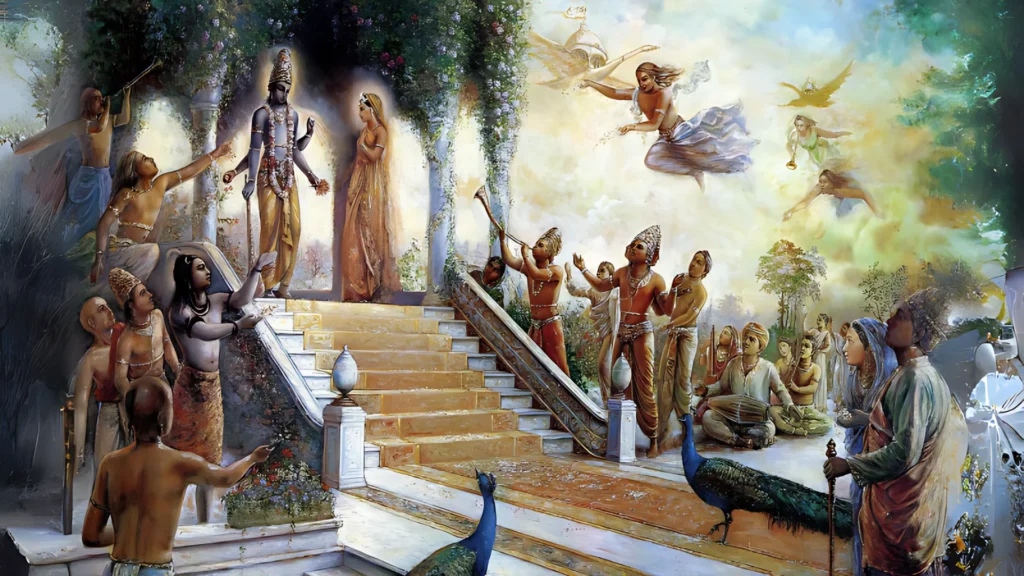
This Pralay destroys all past accounts of Karma be it Papa or Punya and grants individuals the service of the Supreme Lord. An interesting thing to note will be that the first Nitya Pralay and the last Ātyantika Pralay center on individual attainments and do not deal with the cosmic dissolution process.
Please Like the Blog and Share it for Maximum Reach

